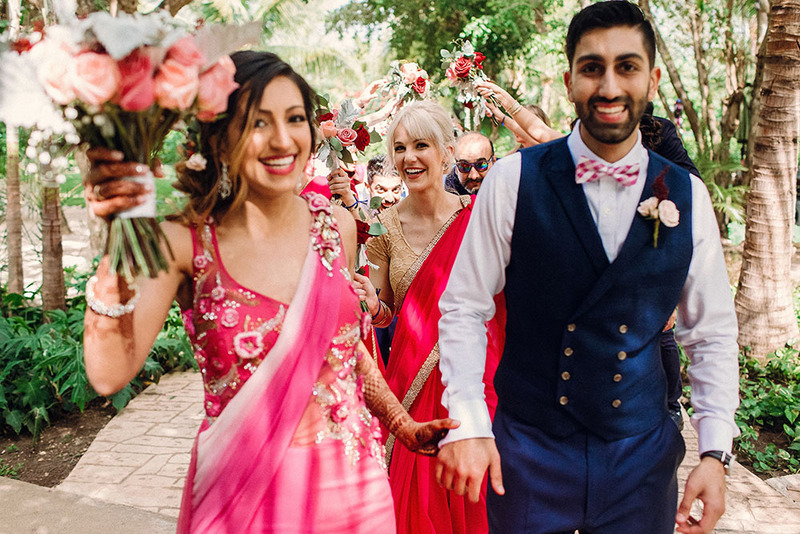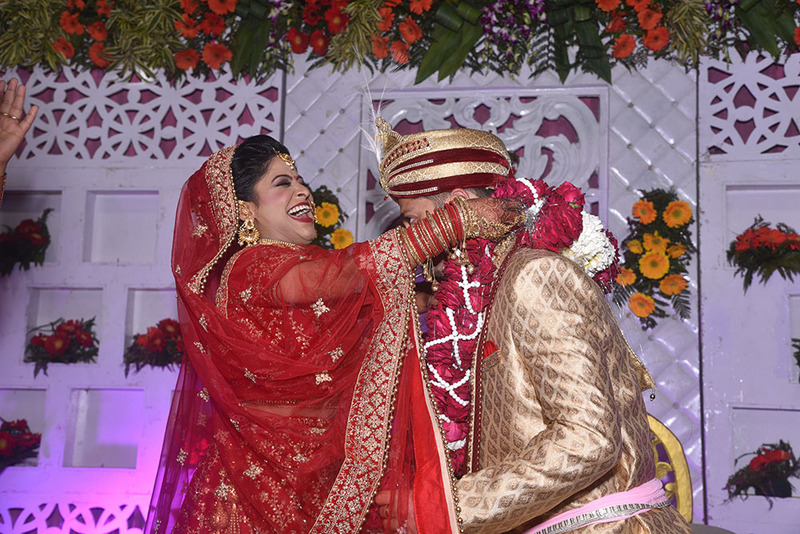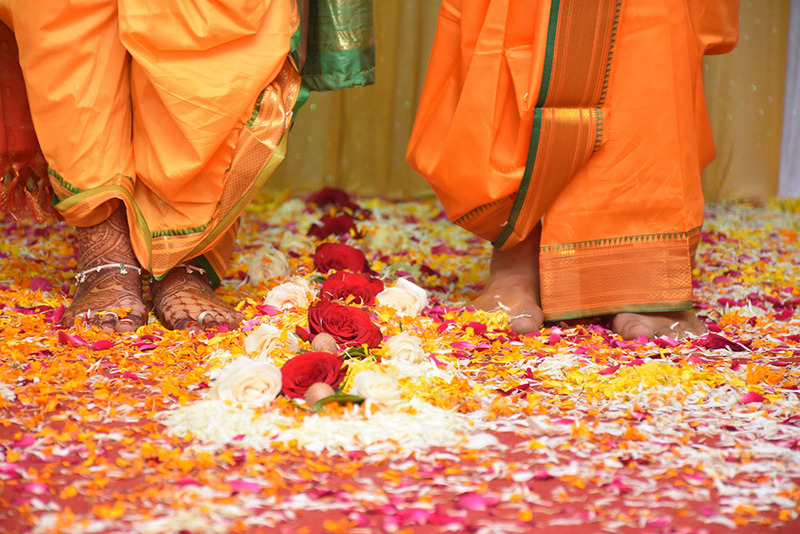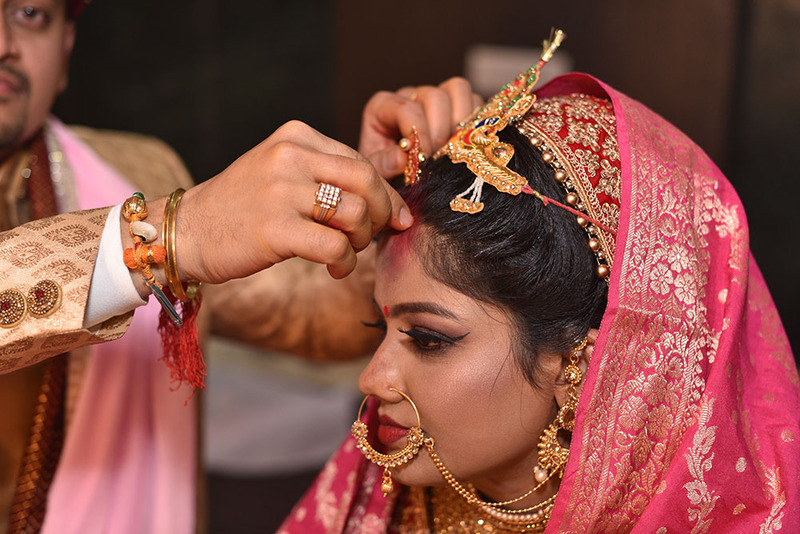AMERICAN WEDDINGS BLOG
Stay up to date with the latest wedding ceremony trends, script writing inspiration, tips and advice for first-time officiants, and news that matters to couples and wedding ministers.
Stay up to date with the latest wedding ceremony trends, script writing inspiration, tips and advice for first-time officiants, and news that matters to couples and wedding ministers.
Published Thursday, Apr. 18th, 2024

Many Hindu Indian wedding celebrations last for days, with joyful pre-ceremony rituals like the Sagai and Tilak (presenting an engagement ring, welcoming the groom or new partner into the family), the Haldi (a cleansing ritual with cheerful yellow turmeric), a Mehndi Party (henna party), and the Ganesh Puja (praying to Ganesh to avoid mishaps on the wedding day) leading up to the ceremony... and many more!
The actual wedding ceremony itself is also filled with numerous rituals and customs -- and can last for hours!
If you’ve never attended a large Indian wedding before, you’re in for a moving, meaningful, and fun experience. These celebrations tend to be ornate and expressive, filled with color, music, laughter, prayer, flowers, and light.
Hindu weddings vary widely depending on local traditions and the families involved, and some couples will pick and choose the traditions they want to include. But almost all Hindu weddings will include the rituals listed below.
Use these short descriptions as an introduction to the customs, and click the links included to learn more.

Photo: IVASHstudio / Adobe Stock
Whether the ceremony is more modern or traditional, you'll probably see variations of these Hindu (Indian) wedding traditions!
Traditional Hindu weddings are a type of Vedic yajna ritual, or holy fire ceremony, performed by a Priest. This means that you can expect to see a sacred fire in the center of the ceremony space, and to hear several mantras recited and repeated by participants throughout the ceremony. The consecrated ‘open flame’ ceremony is an important part of all traditional Hindu marriage celebrations, even if other customs vary. It may be a bonfire outdoors, or a small fire lit in a decorative urn for an indoor venue.
(Interestingly, several other religions and cultures celebrate marriage with a fire ritual. One of the most well known is the Pagan tradition of a Beltane bonfire wedding to celebrate a new marriage and the renewed bounty of Spring.)

Above, the father of the bride makes an offering in the holy fire
This ritual is similar to the Western wedding’s ‘First Look,’ and is the first time the couple ‘meet’ at the venue on the day of the wedding.
The groom arrives first, and is given a blessing by the mother of the bride. The bride arrives next, and the couple exchange colorful garlands strung with flowers and ribbon as their friends and family watch. This exchange is a playful moment, as the groom’s attendants will pretend to ‘fight off’ the bride as she places the garland around the groom’s neck. In same-sex/same-gender Indian weddings, this ritual might be modified so that both partners arrive at the same time, or with either one arriving first.
The Varmala symbolizes the couple’s desire to marry, and takes place right before the public ceremony begins, and is followed by the Kanyadana. (Read more about the Varmala here.)

The Varmala ceremony starts the wedding proceedings with laughter and love.
Although you’ll find this ritual included in nearly all Hindu weddings, how it’s performed varies widely. This symbolic act celebrates the parents or elders of the bride ‘giving their daughter away’ in marriage. (It’s important to note that the husband and wife both continue to be viewed as integral parts of their separate families, even after marriage, and this ritual doesn’t change that.)
During the ritual, the bride’s parents (or just the bride’s father) place their daughter’s hand in the groom’s to symbolize their hope and expectation that she will find continued happiness in his care as they make a new home together. Gender neutral options: In same-sex, same-gender, or gender-neutral ceremonies, this ritual might be modified to suit the couple’s preferences and style. (Read more about the Kanyadana custom here.)
Video: WESTOCK / Adobe Stock
An Indian father gives his daughter 'away' by loving placing her hand in her husband's during the wedding ceremony
This simple custom holds deep meaning! The bride and groom clasp hands in front of the ceremonial fire to symbolize their union in marriage. They might recite hymns or mantras to welcome happiness and harmony into their marriage.
Similar to handfasting rituals found in Celtic and Pagan weddings, this simple hand holding represents the willingness, desire, love, respect, and commitment that form the bond between spouses. Many people also see it as a symbol of a bride’s trust in her groom as she places her heart in his hands, symbolically.

Holding hands during the Panigrahana or Paani Grahanam can symbolize the bride giving her heart to her groom willingly, and the couple's spiritual and physical bond in marriage.
The Saptapadi ritual is sometimes called the Seven Steps or Seven Feet ritual and represents the couple's marriage vows. The couple clasp hands and walk in a circle around the holy fire seven times as the Priest recites seven hymns or mantras from the Vedas. Each of these seven trips around the fire, called a Pheras, represents one of the seven promises (or vows) of marriage and is a legal component of Hindu marriages.
These vows include promises to respect, honor, and support each other, to be faithful, to raise children and grow old together, and to build a strong and loving marriage grounded in friendship and trust.
Sometimes, couples will tie their clothes together or tie a satin cloth around themselves before they circle the fire (this is a Gath Bandhan ritual), or wear a linked garland or chain around both of their necks, or tie their wrists together with a decorative ribbon. (Read more about the Saptapadi and vows here.)

Photo: Viktoriya Dixit / Adobe Stock
The path the couple walks during the Saptapadi ceremony is often decorated with beautiful flower petals and blooms.
The Sindoor ritual is thought to be nearly 5,000 years old, and is still practiced today as a beautiful visual symbol of marriage. During the wedding ceremony, following the Saptapadi ritual, a groom will rub sindoor (a vibrant red powder) into the bride’s hair parting, from her forehead to the crown of her head. This act symbolizes the groom’s commitment to the marriage.
Some married women wear sindoor along their partings every day after the wedding, as a symbol of their status as married women. (Read more about Sindoor rituals here.)

A groom places red vermillion sindoor powder into the bride's hair parting during this very symbolic and auspicious ritual.
Become a Wedding Officiant with Our Free Online Ordination!